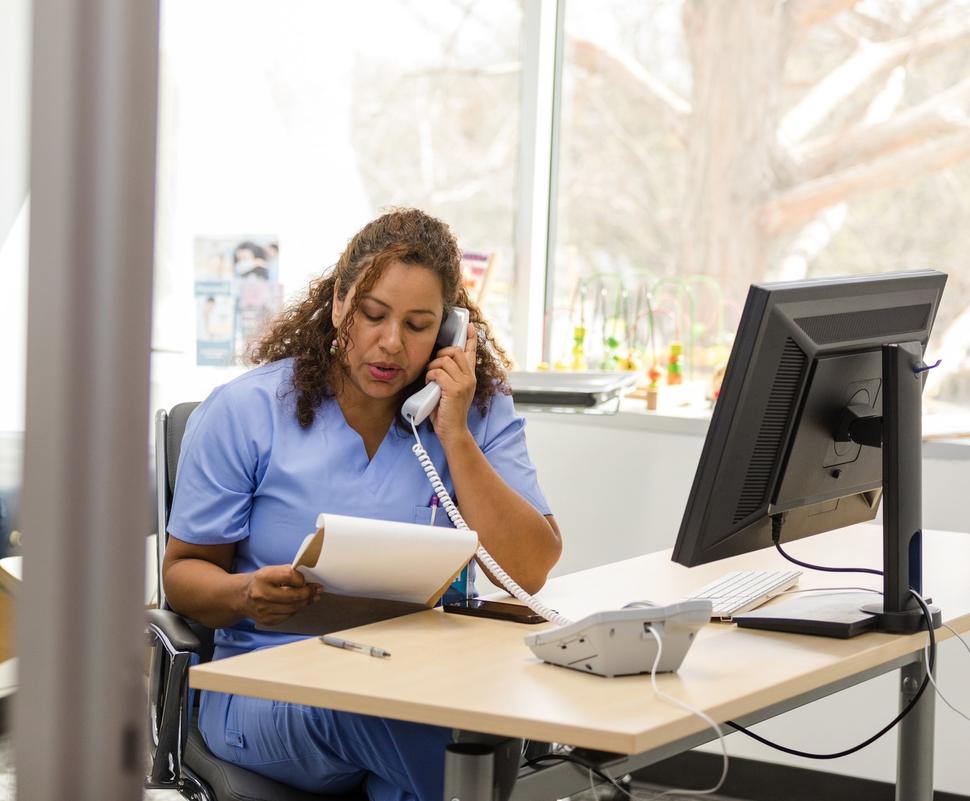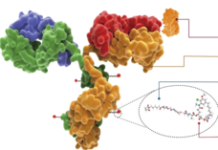, by Linda Wang
Screening tests like mammography and low-dose CT scans can catch cancers early only when people with abnormal results return for the necessary follow-up testing. But many people with abnormal results don’t get this additional testing in a timely fashion.
A new study suggests that a simple letter and phone call can help modestly increase the percentage of people who complete this follow-up testing. The findings come from an NCI-funded clinical trial of nearly 12,000 people overdue for follow-up testing after an abnormal result on a screening test for breast, lung, cervical, or colorectal cancer.
The trial compared several different approaches to encourage participants to complete recommended follow-up testing. The most effective approach involved sending an automated reminder about the need for follow-up through the electronic health record (EHR), along with a letter and a phone call.
About one-third of people who received this level of outreach completed follow-up testing, according to results published October 10 in JAMA.
People in the study who received an EHR reminder alone or usual care—that is, no systematic outreach via an EHR or other means—had similar rates of follow-up testing, with less than a quarter completing testing within 4 months.
“If you want to maximize the benefits of cancer screening, you need systems in place that include [both] EHR reminders and patient outreach,” said Steven J. Atlas, M.D., M.P.H., of Massachusetts General Hospital, who led the study. “Earlier treatment that may cure the cancer requires the timely follow-up of these abnormal results.”
“This is a really important study,” said Sarah Kobrin, Ph.D., M.P.H., of NCI’s Healthcare Delivery Research Program. “The challenge of getting people to follow up once they’ve had an abnormal screening test is huge and not something that we have good fixes for. This is one of the biggest studies to really focus on improving rates of follow-up testing.”
Dr. Atlas and his colleagues acknowledged that, despite the multiple reminders, there was still limited increase in completed follow-up testing.
The findings highlight “the need to understand factors associated with not completing follow-up that go beyond reminder efforts,” they wrote.
Falling behind on follow-up testing
Cancer screening is intended to detect cancer before a person has any symptoms so that it can be prevented or treated early, when treatment may be most effective. An abnormal result on a screening test means that something has been identified that could be cancer or an increased risk of cancer. But additional procedures, including imaging tests and biopsies, are often needed to say for certain that whatever the test has found is indeed cancer.
Several studies have shown that many people with an abnormal result don’t get follow-up testing. A recent study, for example, found that only about half of people who had an abnormal result on an at-home test for colon cancer got follow-up testing. Another study, on lung cancer screening among veterans, found that more than a quarter of those with abnormal screening results had either delayed or no follow-up testing.
But the responsibility isn’t solely on patients. Health care providers and health systems have a role to play as well, Dr. Atlas said.
“While we make a lot of efforts to get patients screened in systematic ways,” through public health messaging and reminders to patients within health care systems, “we haven’t put as much effort into improving follow-up after screening,” Dr. Atlas said.
Many factors may account for the delays in or absence of follow-up, explained Dr. Kobrin.
Some people put off additional testing because they want to avoid a painful biopsy or they’re afraid of receiving a potentially life-changing diagnosis. Others may face barriers such as a lack of insurance coverage or other serious challenges, like difficult work schedules or lack of childcare, that prevent them from getting to the doctor’s office.
Structural-level factors, such as hospital staff shortages and other resource limitations, can also contribute to delays in follow-up testing.
Automated reminders, patient outreach, and use of patient navigators—people who help guide patients through the health care system—are three common approaches health systems and health care providers use to encourage patients to complete follow-up testing.
However, little research has been done to measure and compare how effective these different tools are, Dr. Atlas said, so he and his colleagues sought to do so.
The power of following up
The study included 11,980 patients from 44 primary care practices within three primary care networks (Brigham and Women’s Hospital, Massachusetts General Hospital, and Dartmouth Health) who were overdue for follow-up of an abnormal result from a screening test for breast, cervical, colorectal, or lung cancer.
The primary care practices were randomly assigned to one of four intervention groups:
- usual care, which included outreach and follow-up at the doctor’s discretion, as well as access to test results in the patient portal but no reminder in the EHR
- EHR reminders
- EHR reminders and outreach that included a mailed or patient portal letter and, if needed, a phone call from study staff
- EHR reminders and outreach that also included, if needed, a phone call from study staff and a phone call from a patient navigator
In both the usual care group and the EHR reminder group, about 23% of participants completed their follow-up testing within 4 months of joining the study. By comparison, about 31% completed follow-up testing in both the group that received EHR reminders, a letter, and a personal phone call and the group that also got an additional call from a patient navigator.
The researchers also analyzed the data by the risk (or likelihood) of cancer suggested by the screening test results.
The additional reminders made more of a difference in follow-up for people whose abnormal results suggested a lower risk of cancer than a higher risk of cancer. That may be because people whose screening results are more worrisome need less prodding to get checked out, Dr. Atlas said. More effort is also made by health care providers to make sure those people complete follow-up testing.
The reminders also worked differently for different cancers. For example, reminders led to more follow-up test completion among people with abnormal results from colorectal and cervical cancer screening than for those with abnormal results from breast cancer screening. Dr. Atlas explained that laws require radiologists to follow up with patients who have abnormal mammogram findings, but such laws don’t exist for cervical and colorectal cancer screening.
A difference in the effects of the type of reminder could not be determined for lung cancer screening, Dr. Atlas noted, because there were few people with abnormal lung cancer screening results in the study.
Closing the follow-up screening gaps
Although the addition of a letter and phone calls to the EHR notice was helpful, a majority of people in the study still had not completed follow-up testing within 4 months.
Several factors may have contributed to the low rate of follow-up testing, Dr. Atlas explained, including the fact that the study was conducted during the COVID-19 pandemic, when people held off on getting medical procedures. In addition, the study population may have inadvertently included some people identified as being overdue for follow-up testing when they actually weren’t.
Also, the researchers did not intervene until people were already 1 to 6 months overdue for follow-up testing. “I would argue that we should [deliver the reminders earlier] when it may be more on the minds of patients or clinicians,” Dr. Atlas said.
Dr. Kobrin said it was reassuring to learn that simple interventions can be just as effective as ones that require much more resources.
“The fact that [adding] patient navigation, which is expensive and not feasible for a lot of health care systems, produced essentially the same results [as reminders and a single phone call] means that more isn’t always better,” Dr. Kobrin said.
In addition to reminders, health care providers could make it easier for patients and their doctors to schedule follow-up testing, she noted.
“We learned during the pandemic that if you have vaccine clinics on Saturdays and at night, people come because that’s more convenient for them,” she said. “[Health care systems] could make it easier for people to come back for these follow-up appointments.”
Dr. Atlas agreed: “There are lots of things that we, [as a provider community,] can do better. This study identifies places where we should start.”







